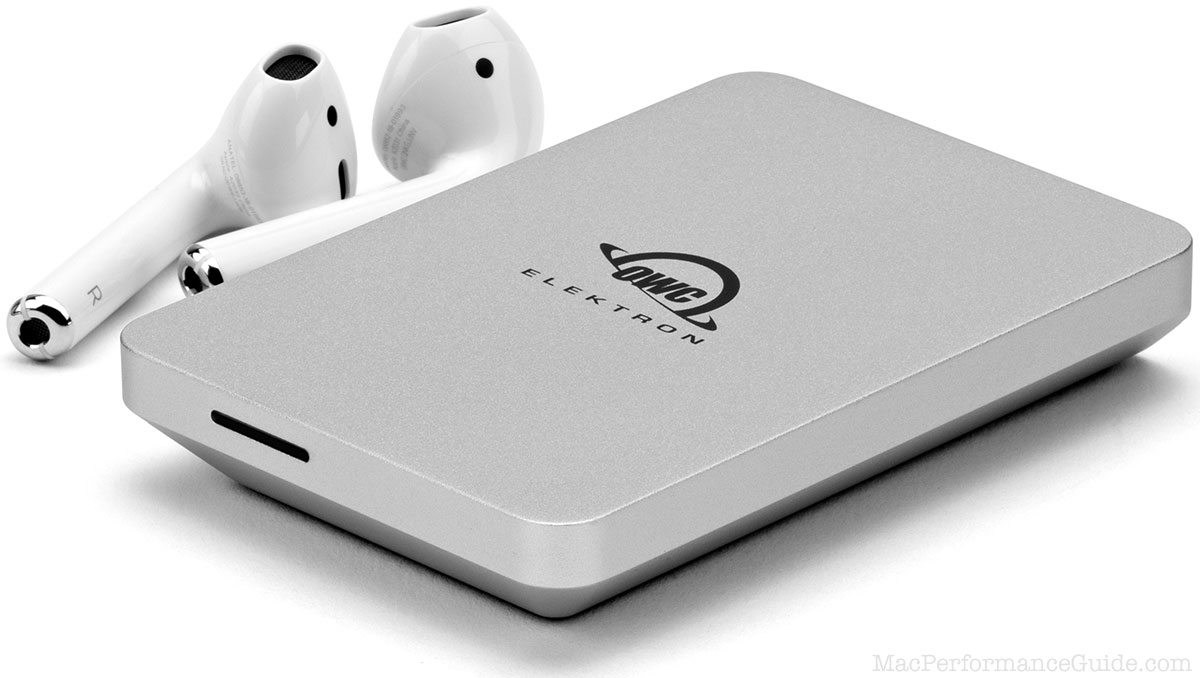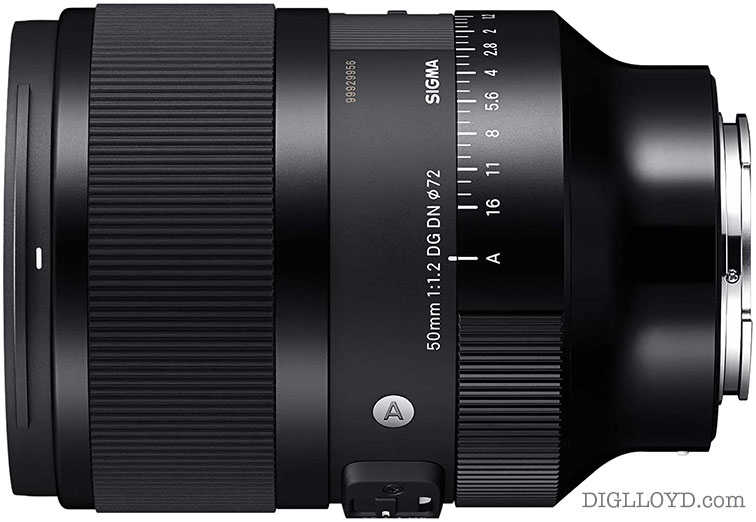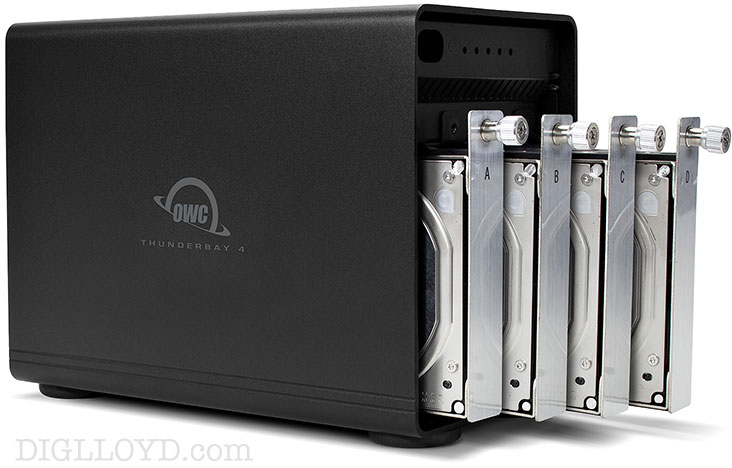
|

|

|

|

|

|
NEC PA301W Wide Gamut Color Display
Related: color space and gamut, computer display, display, display connectivity, DisplayPort, GPU, Mac Pro, NEC PA271Q, NEC PA302W, NEC professional displays, USB, video tech
The PA301W is succeeded by the PA302W, which is part of the new “**2” series: PA242W, PA272W, PA302W.
In late January 2011, I received an advance unit of the new NEC PA301W 30" wide gamut color display, and I have used it daily for about 6 weeks prior to writing this review. I am very pleased with the PA301W, as this report details.
My past experience with NEC has been about 24 months with the older NEC 30" 3090W-BK-SV display, the NEC 27" PA271W (and two Apple 30" Cinema Displays and a Sony Artisan CRT prior to those).
I am pleased to report that the NEC PA301W 30" display is every bit as good as the NEC PA271W 27" display. To its further credit, I placed it side-by-side with the Eizo CG303W 30" display (which costs about twice as much), and I was hard pressed to tell the difference.
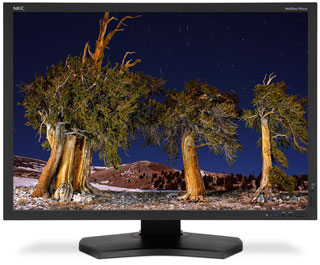
Luxurious web page viewing
Want to kick back and read the web luxuriously? Rotate the PA301W vertically, and enjoy a 2560 high by 1600 wide view for the best web browsing experience ever. I find that I like the 30" display vertically even better than the 27" PA271W, because of the extra width that allows more zooming-in for some web pages.
To size up web pages in Safari, hit once or twice to magnify the web page, resulting in ultra-smooth and comfortable-to-read text. Read that way, there no pixels, just ultra-smooth text. I find this a huge productivity tool when I review my web pages, especially around midnight, when my eyes are tired, and it’s easy to miss typos and the like.
If you’re 25 years old with 20/20 vision, you might not care. But if you are 40+ and/or you want to kick back a few feet away and read with no eyestrain, it’s better 'n sourdough bread with potato chips and chocolate.
Click for a huge image to compare the image rendering.

Connectivity and physical characteristics
Resolution: 1600 vertically versus 1440
There is a size and resolution difference between a 30" and 27" display:
- The 30" display offers 2560 X 1600 resolution (aspect ratio 16:10).
- The 27" PA271W is 2" less wide, and offers a resolution of 2560 X 1440 with an aspect ratio of 16:9, corresponding to HD video dimensions.
The difference is immediately noticeable when viewing standard DSLR images, which have an aspect ratio of 3:2: the screen feels a bit truncated vertically when using a 27" display if you are used to a full 30" display (but most users will find a 27" display quite large and pleasant).
Acoustics
My evaluation unit was silent. I detected no noise, even in a quiet office. This was a relief compared to the competing Eizo CG303W I tested, which has a noisy eye-level fan (Eizo says the fan is to maintain image consistency, but I’ve never had issues with my NEC).
Power consumption
My WattsUp power meter showed that the PA301W consumes about 88 watts, down 16% from 105 watts with its predecessor 3090W. That’s excellent for a 30" display, and no small thing in my office, which is not air conditioned in summer, and electricity is very expensive where I live.
Ergonomics
Unlike the glitzy and ergonomically brain-dead Apple displays, the NEC models can be rotated vertically or horizontally, raised or lowered, or angled forward or back.
If you work long hours at the computer, such features are mandatory for the health of your body parts, especially your head and neck, which must be positioned properly relative to the display. As I once spent a few thousand dollars in medical costs repairing damage to my neck from poor ergonomics, I applaud NEC’s design, and I find Apple’s dilettante approach unforgivable (I’m not interested in spending another $500 + labor for a VESA swing-arm to bolt to a wall, just so I can adjust the monitor height and tilt.
Ultra-high performance across entire capacity, outperforms the competition.
Tiny, bus-powered, rugged, compact!
Connectivity and cables — dual inputs
There are two dual-link DVI-D ports and two DisplayPort connectors on the PA301W, along with two USB uplinks (each can go to a different computer). The USB uplinks can be tied to your choice of video input using the NEC MultiProfiler software, thus allowing a quick switch between two computers using the Input bottom on the front of the display.
Most new Macs now have Mini DisplayPort for external video, which requires a Mini DisplayPort (Mac end) to DisplayPort cable. The Mac Pro video card has one DVI-D port on the video card and two Mini Display ports, so either type of cable can be used with a Mac Pro.
The issue is that the NEC displays have a DisplayPort connector, and thus a Mini DisplayPort to DisplayPort cable is needed. But as yet, the PA301W does not ship with this cable.
Various vendors offer a Mini DisplayPort to DisplayPort cable, but I strongly recommend the NEC PA-MDP-CABL which I’ve tested and found to solve the dual display wake-from-sleep issues on a Mac Pro. Users with a single display are unlikely to encounter any issues with any off-the-shelf cable from other vendors.
Anti-glare
Some users report being bothered by an anti-glare coating (which might apply to any number of brands). There is apparently a difference in human visual systems, because as hard as I try I cannot see anything like this effect. Based on feedback from readers, my working theory is that some people’s visual systems are wired in a way that lets them see it, but the large majority cannot. At any rate, the mirror-like display of Apple’s offerings are unusable for me.
Note that most of Apple’s most current displays are mirror- surfaced, excepting anti-glare options on the MacBook Pro, and the mediocre old Apple 30". I also don’t know if such users would have an issue with the Eizo CG303W.
Here is what one user states about the NEC PA271W. I cannot see anything at all like the user describes, at any viewing distance, near of far:
One of the things that's going on with the NEC 27" PA271W is that the screen is coated with a matte surface that is different than on the Apple screens. The granularity of the coating on this NEC is extremely noticeable to my eyes, and it even looks like it's refracting the underlying LCD matrix a little bit. If my eyes are closer than about 24 inches from the screen, I'm actually discerning the red/green/blue bits in the whites. It doesn't look like a grid to me (because of the coating), but it does look like ultra-fine chroma noise (static, not moving). It's uncomfortable to look at. If I keep back more like three feet, the effect largely goes away. The effect is much worse in the dark than when I have the lights up.
The other thing that may be affecting me somehow is the fluorescent backlight. I've spent the last year and a half mainly staring into an LED-backlit screen (Mac Book Pro). I'm fairly sensitive to the strobing of overhead fluorescent lighting, but that may not be what's going on here.
How I tested the two displays

I connected up both the NEC 3090WQXi 30" display (which I’ve used for two years), and the new NEC PA301W to my Mac Pro, and the 27" PA271W as follows:
- I set the PA301W as the main monitor, in landscape mode with a Mini DP to DP cable.
- To its left, the older 30" display was positioned in portrait mode, connected to the dual-link DVI port.
- To the right, the PA271W in portrait mode on Mini DP connector.
I calibrated the displays as shown.
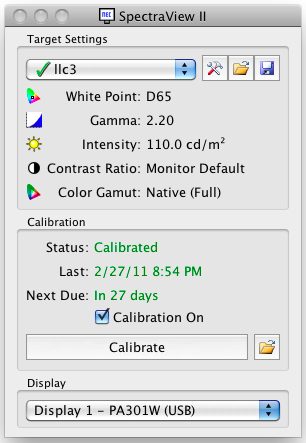
Calibration is so simple that anyone can do it— no eyeball guesswork. The bundled calibrator (BK-SV models) takes care of everything, with outstanding results. But don’t make a silly mistake like I did: forgetting to remove the white plastic shield from the measurement puck! The display still calibrates, but won’t be correct with it in place. Fortunately, NEC has added a warning (which can be turned off) in the current version of the Spectra View II software.
Color and grayscale
I used my eyes on a variety of images filling the screen, with high key (such as snow scenes with subtle color), and images dominated by dark tones, and images with a wide variety of colors.
I performed a grayscale test from pure black to pure white and compared the NEC PA301W to the Eizo 30" CG303W, seeking to determine how well find shades of gray could be distinguished near pure black and pure white. I found that I could distinguish RGB (0,0,0) from RGB(1,1,1), and RGB (253,253,253) from (255,255,255)— value 254 was not distinguishable on either the NEC or Eizo display.
IN STOCK!
For Sony mirrorless or Leica L.
Impressions
The PA301W is excellent, and I will be getting one— color is fantastic, uniformity excellent, and text is super clean. It’s a solid match for the PA271W. But in truth, it’s hard to tell much difference between either the older 3090W or the (much more expensive) Eizo CG303W.
I love the luxurious web page viewing I get with one 30" model in portrait mode, like this (zoomed), or like this (normal size) (your browser might scale those images, and they are from the slightly narrows 27" model).
Zooming web pages to fill the width is very easy on the eyes, and could be a godsend for anyone whose eyesight needs a little boost. Text is ultra smooth and delicious to look at when zoomed up a little— so pleasant.
At normal size, the amount of vertical space is truly impressive, and makes reading long web pages very enjoyable— awesome!
I spend many hours composing web pages, so this setup is super helpful: I edit on the 30" display, and I keep a full size browser preview filling the fully 27" display. Awesome! I could see some users running dual 27" display in portrait position.
Color gamut and accuracy
A wide color gamut (range of colors) is a major reason to get the PA271W or the 30" PA301W. The edge-to-edge uniformity and gray scale accuracy is another reason. Just darn good looking in general— this is your primary computer interaction, so it’s worth optimizing.
When you first see a monitor like the PA301W, you’ll be shocked at just how much you’ve been missing with an older panel like the Apple 30" Cinema Display— there is no comparison.
Gamut you can’t see kills your work and your prints
If you can’t see it, your chances of making a print that matches your artistic vision diminish greatly; it’s a severe handicap. Today’s DSLRs, especially Nikon and Canon high-end DSLRS, have a very wide color gamut which often exceeds the popular AdobeRGB color space. I recommend working in 16-bit mode using ProPhotoRGB, or LAB color.
For prints, the latest Epson and some other brand printers have a wider gamut in some colors than even the best monitors. The wider the gamut, the better, both for display and printer.
Gamut plots from NEC
The gamut plot below compare the displays. See this NEC table on coverage of color spaces.
The plot below (supplied by NEC) shows the important differences between the gamuts, but you might not measure exactly the same primary values as those on your own display.
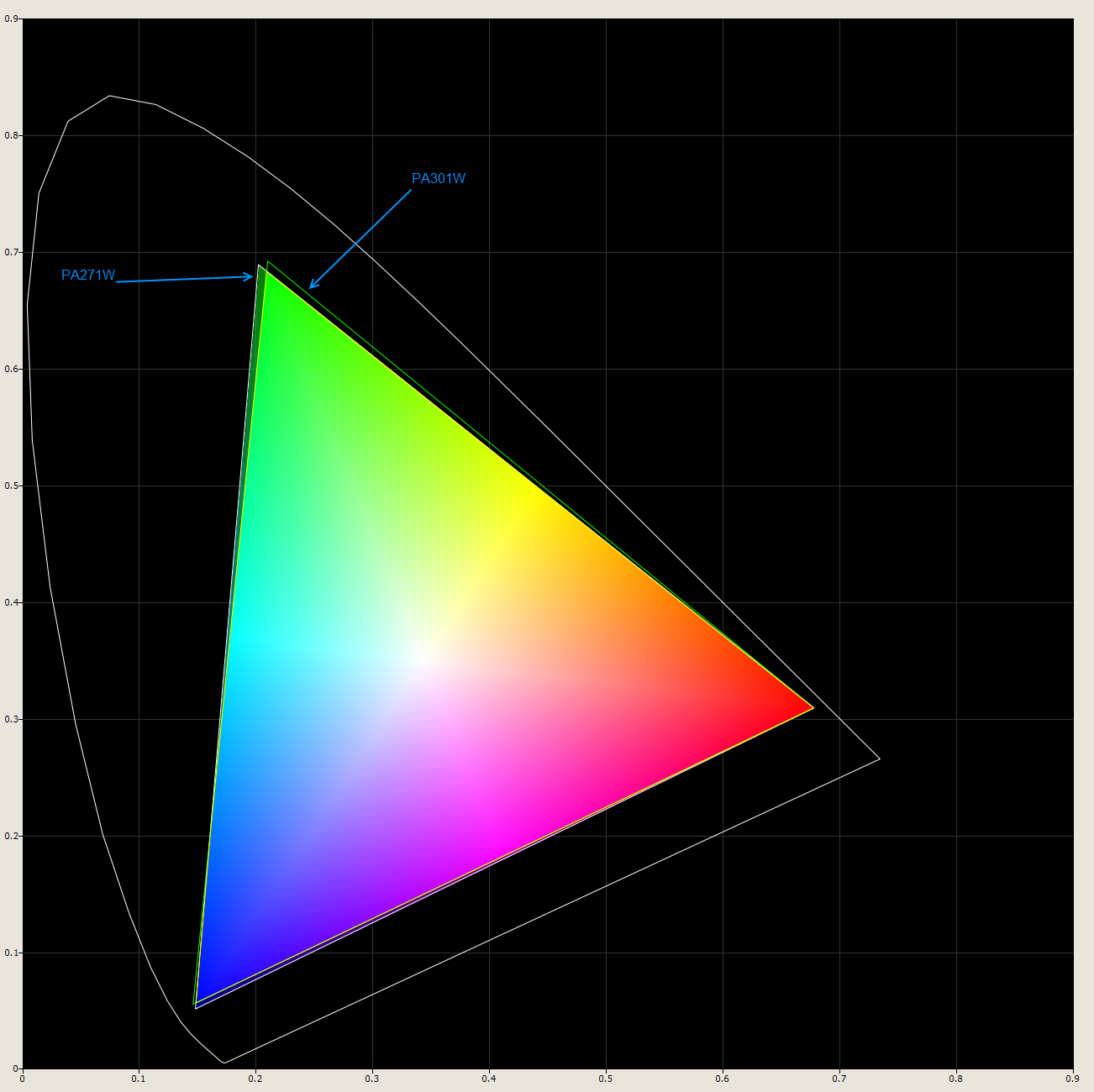
Based on NEC-supplied plots
The PA301W shifts its gamut in the blue/cyan area slightly;, the blues for 3090 and PA271W are "deeper" (e.g. less cyan, more purple-magenta).
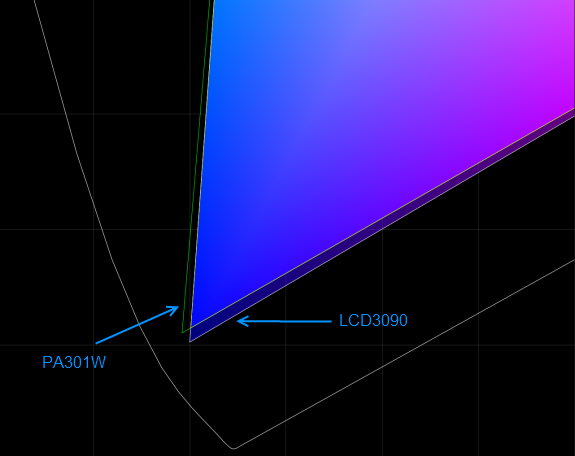
Based on NEC-supplied plots
The PA301W also has a slightly different gamut in the greens compared to the27" PA271W.
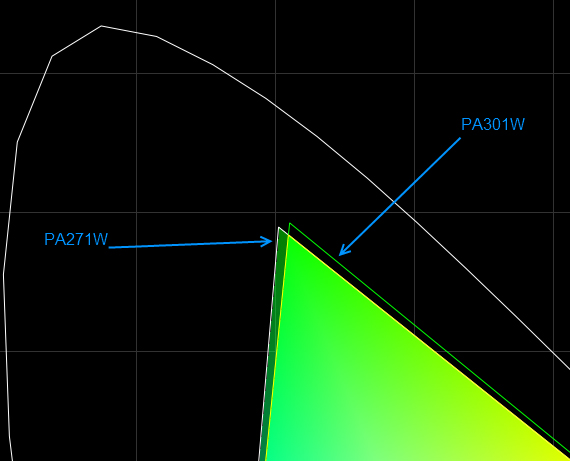
Based on NEC-supplied plots
As-calibrated gamut for PA301W, PA271W, 3090W
The plots below are as actually calibrated using identical settings.
Compared to the older 3090WQXi, the PA301W offers a bit more gamut in the greens and reds, while giving up a slight amount in the deep blue and indigo and magentas. The differences are small, but this does get the PA301W almost to the limits of the AdobeRGB color space in the greens. Both models hugely exceed what AdobeRGB can represent in the reds, with sRGB a relic by comparison. And yes, this does matter for modern digital cameras and printers.
It does appear that the PA301W has less of a gamut than the 27" PA271W in the blues, as shown further below.
Note: If the color looks strange in the gamut plot below, then you do not have a color-aware browser (image is shown in the ProPhotoRGB color space).
Mouse over the image to see the gamut of the older LCD3090WQXi .
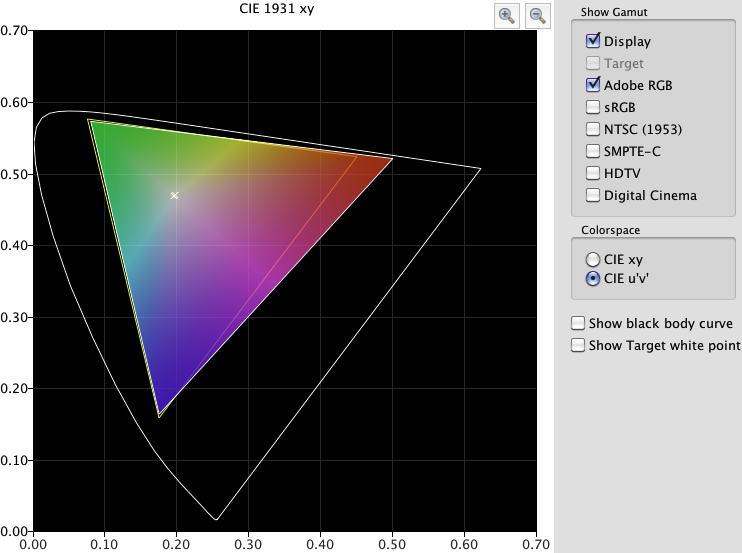
(as actually calibrated on Mac Pro test system)
The gamut of the PA271W is shown below. Mouse over to see the PA301W.
The 27" PA271W offers a wider gamut than the PA301W in the blue/magenta/red of the gamut, but very slightly less in the greens. These plots are as actually calibrated on the displays which I tested on my Mac Pro. The conclusion here is that the PA271W remains the gamut champ in the NEC large display lineup.
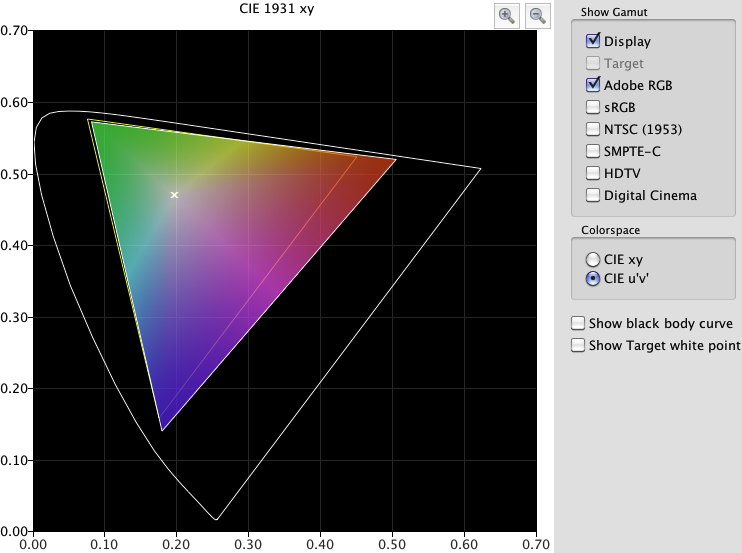
(as actually calibrated on Mac Pro test system)
Accuracy is excellent, around delta E of 1, about as good as one can hope for.
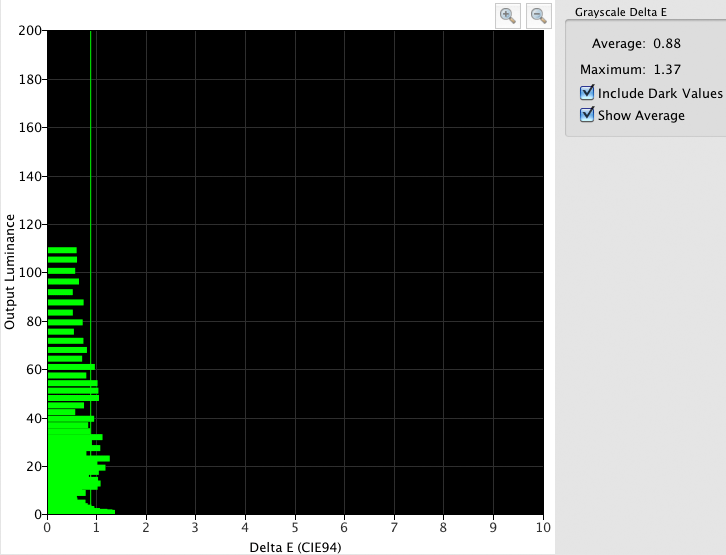
(as actually calibrated on Mac Pro test system)
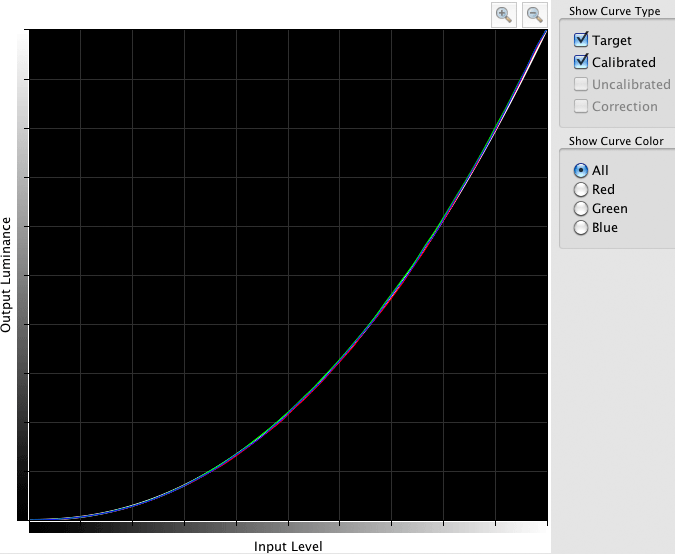
(as actually calibrated on Mac Pro test system)
Using the PA301W to sRGB mode
There are some reasons to force a display to use a more limited gamut, such as sRGB. When that occurs, one concern is the accuracy of the displayed gamut. Here is what NEC has to say about using sRGB color space:
The degree of precision for the steps between colors is just as precise, there is just a smaller set of colors overall to choose from.
This is because the 14-bit internal LUTs and our custom color processing technology (marketing speak: SpectraView Engine) allows the display to maintain the maximum possible number of color levels. This all occurs without introducing artifacts such as banding, so even sRGB looks good.
High capacity, high-performance fault-tolerant storage for photography and video.
Non-RAID or RAID-0/1/4/5/10.
Capacities up to 72 Terabytes!
10-bit color
The NEC PA301W and PA271W both support 10-bit color (30 bit color), as do the video cards found in the Apple Mac Pro, but as of March 2011, Apple still does not supply 10-bit drivers. Maybe someday, since the photographic community has been waiting with impatience for over a year now.
When 10-bit color does arrive, the smoothness of tonal transitions and other subtle improvements should make the NEC displays even more lovely.
Conclusions
The NEC PA301W BK-SV is an outstanding display. I will be buying one as 2560 X 1600 are a perfect size for my work, an modest but noticeable advantage over 2560 X 1440 for the 27" PA271W.
However, the gamut plots as actually calibrated shows that the 27" PA271W actually offers a significantly wider gamut into the blue/magenta/red area, so if you’re looking for the widest possible gamut, stick with the PA271W.
Remember that even if you’re not a photographer, you’ll love the working space of 2560 X 1600 and the first-rate ergonomics, with dual pairs of inputs and USB ports as icing on the cake.
Where to buy
See my computer wish list for recommended monitors. The PA301W should be available by late March, 2011.
Be sure to order the NEC “BK-SV” model, which includes the calibrator that talks directly to the display for 14-bit accuracy, not just any calibrator will suffice. NEC says this about the calibrator:
It is the individual color sensors which are custom calibrated by X-Rite to match our Wide Color Gamut displays, rather than the software trying to make some compensation for a generic device in software.

















